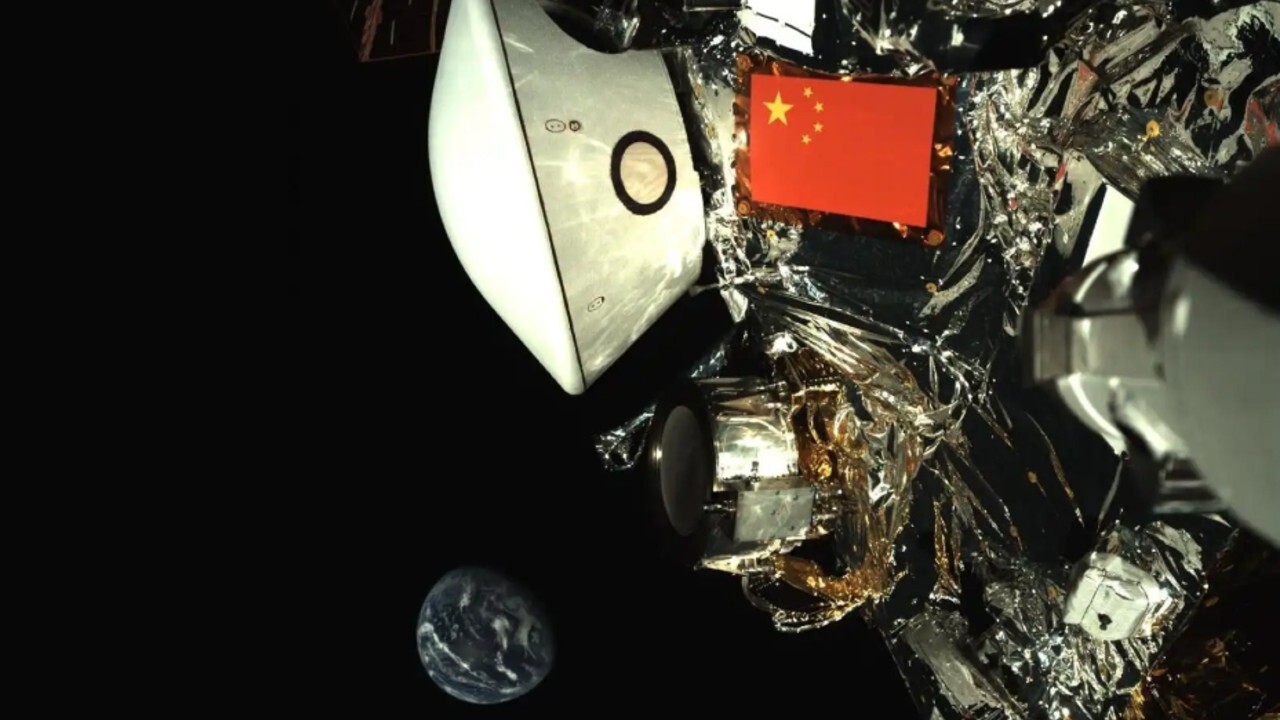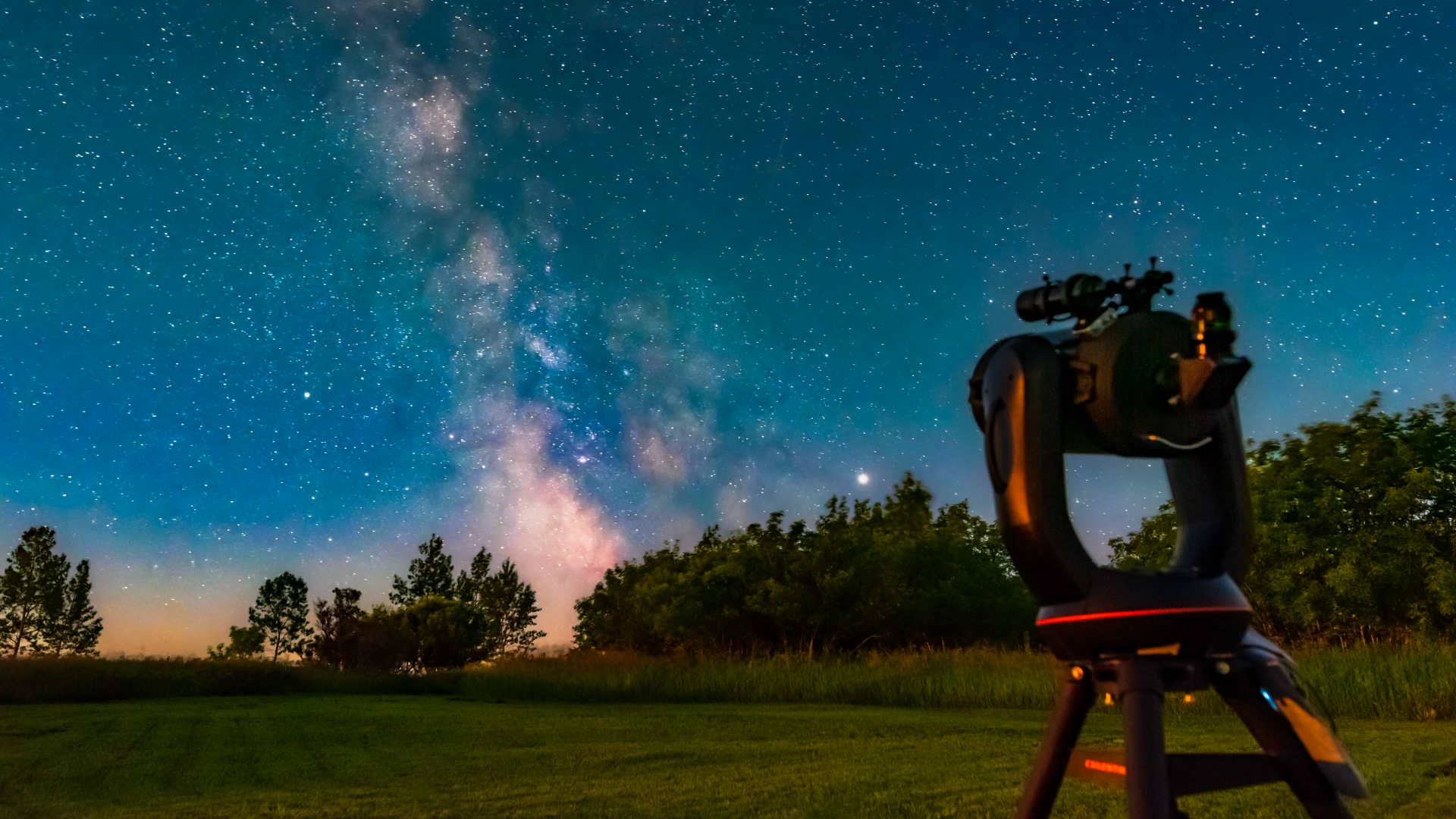China's Tianwen 2 asteroid-sampling spacecraft snaps a selfie with Earth
China's flag also shines prominently in the picture.

Smile! A spacecraft just caught you — and everyone else on our planet — on camera while snapping a selfie.
China's Tianwen 2 spacecraft took a picture of itself, as well as the Earth, while en route to a mysterious asteroid. The image, released Wednesday (Oct. 1), also shows the Chinese flag on the side of the China National Space Administration spacecraft.
Our planet shines in the distance roughly 26.5 million miles (43 million km) away from Tianwen 2. For comparison, the average distance between Earth and the sun is more than three times that: 93 million miles (150 million km).
Tianwen 2 is "functioning normally" and collecting data as expected,, wrote Chinese state media outlet CCTV in an English-language description accompanying the image's release. "The probe has successfully completed a series of in-orbit tests, including the deployment of sampling devices and self-checks of electronic devices," the statement added.
That's all in preparation for the big moment: reaching the mysterious asteroid Kamo'oalewa, which is one Earth's seven known "quasi moons." Tianwen 2 will spend several months doing engine burns to reach its destination, which should happen in July 2026. Then the spacecraft will spend several months at work learning about the asteroid, which may have been a chunk of the moon thrown into space after a big impact.
Tianwen 2 will collect samples and deliver them back to Earth in late 2027, using a reentry capsule. Then the spacecraft will slingshot around our planet for another deep-space rendezvous: a visit with main belt comet 311P/PANSTARRS, expected to happen around 2035.
China operates independently of most of the space community. NASA and other U.S. government agencies are restricted from bilateral work with China or Chinese-owned companies under a 2011 law known as the Wolf Amendment.
Breaking space news, the latest updates on rocket launches, skywatching events and more!
More recently, Congressional hearings have expressed security concerns about Chinese activities in space, adding that the U.S. is in a new "space race" with that country to return astronauts to the moon.
China is showing itself to be a space powerhouse, including in past missions related to Tianwen 2's goals. China previously performed lunar sample returns with the Chang'e 5 near-side mission in 2020, and Chang'e 6's far-side mission in 2024. The country also did a flyby of the asteroid Toutatis in 2012 with Chang'e 2, after that mission mapped the moon.
As for deep-space exploration, China has experience there as well: Tianwen 1, launched in 2020, sent an orbiter, a lander and a rover to Mars.

Elizabeth Howell (she/her), Ph.D., was a staff writer in the spaceflight channel between 2022 and 2024 specializing in Canadian space news. She was contributing writer for Space.com for 10 years from 2012 to 2024. Elizabeth's reporting includes multiple exclusives with the White House, leading world coverage about a lost-and-found space tomato on the International Space Station, witnessing five human spaceflight launches on two continents, flying parabolic, working inside a spacesuit, and participating in a simulated Mars mission. Her latest book, "Why Am I Taller?" (ECW Press, 2022) is co-written with astronaut Dave Williams.
You must confirm your public display name before commenting
Please logout and then login again, you will then be prompted to enter your display name.
